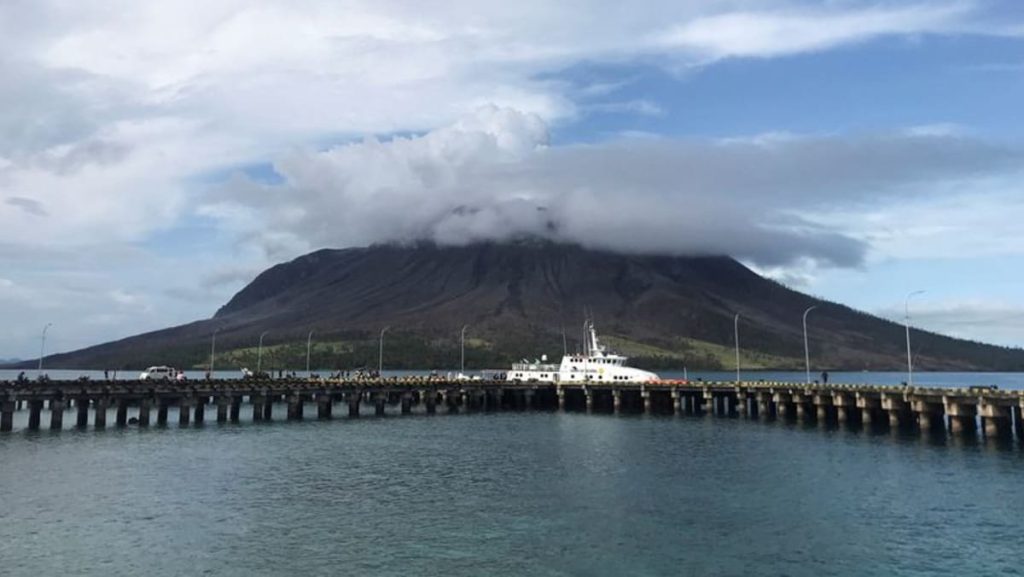Indonesian authorities were closely monitoring Mount Ruang, a remote island volcano that erupted multiple times within a 24-hour period, causing thousands of residents to evacuate. The eruptions, which began late on Tuesday, were characterized by fiery orange lava, a towering ash column, and volcanic lightning. Despite showing signs of calming down on Friday, officials maintained the highest alert level due to ongoing high volcanic activity.
Residents of Tagulandang island, located near Mount Ruang, were seen cleaning up volcanic debris from their surroundings with the assistance of soldiers and police officers. Many recounted their panicked escape when the eruption occurred, with some seeking refuge in nearby homes to protect themselves from falling rocks. Ninice Hoata, a 59-year-old teacher, shared her experience of praying for safety as debris rained down on her location.
A thick white smoke, described as “medium to high intensity,” continued to billow from the crater up to a height of 100 meters, according to Abdul Muhari, a spokesperson for the national disaster mitigation agency (BNPB). Some residents expressed concerns about potential follow-up eruptions and appealed for assistance, particularly in securing tarpaulin to cover leaking roofs. The threat of further volcanic activity prompted authorities to remain vigilant and prepared for any developments.
Officials and emergency responders worked to assess the situation and provide support to impacted communities as they dealt with the aftermath of the volcanic eruptions. The cleanup efforts in Tagulandang involved clearing volcanic material from the harbor and surrounding areas to ensure the safety and well-being of residents. The collaboration between locals, military personnel, and law enforcement underscored the importance of solidarity in times of crisis and the need for coordinated efforts to mitigate risks and damages.
The eruption of Mount Ruang served as a stark reminder of the unpredictable nature of volcanic activity and the potential dangers posed to nearby populations. The continued monitoring and alert status indicated the uncertainty surrounding the volcano’s behavior and the need for ongoing preparedness. Residents in vulnerable areas remained on edge, hoping for timely assistance and supplies to address immediate needs such as shelter and protection from environmental hazards.
As the situation in Tagulandang and surrounding areas unfolded, residents and authorities grappled with the challenges of responding to a natural disaster amidst an already complex and demanding environment. The resilience and resourcefulness of the community were evident in their efforts to clean up and rebuild in the aftermath of the volcanic eruptions. The coordinated response from government agencies and local groups highlighted the importance of collaboration and communication in managing crises and safeguarding vulnerable populations.
Moving forward, the focus remained on ensuring the safety and well-being of those affected by the volcanic activity, as well as implementing measures to enhance preparedness and resilience in the face of future events. The experiences of individuals like Ninice Hoata served as testimonials to the fear and uncertainty that marked the eruption, underscoring the need for effective disaster response mechanisms and support systems. By learning from past incidents and working together, communities in Indonesia and beyond could strengthen their capacity to withstand natural disasters and protect lives and livelihoods.


